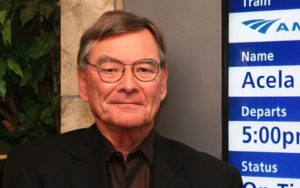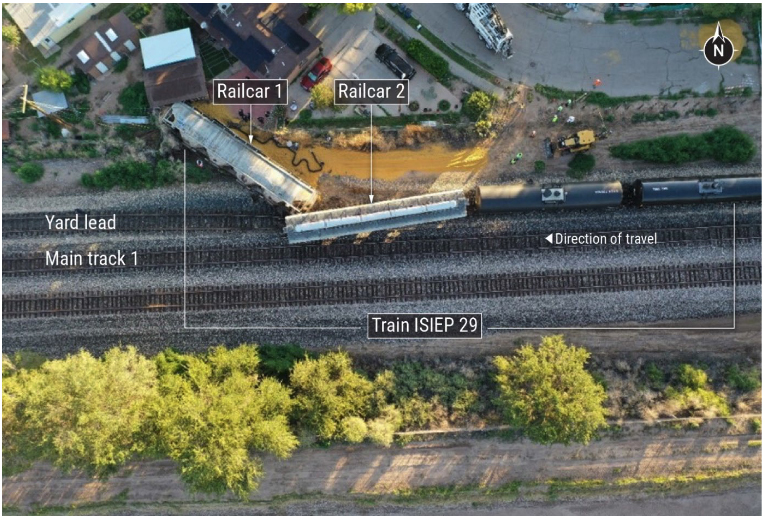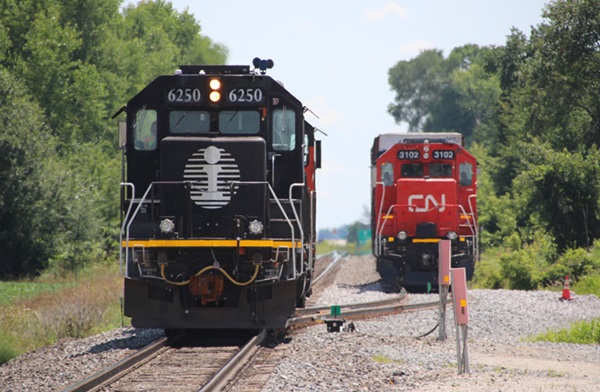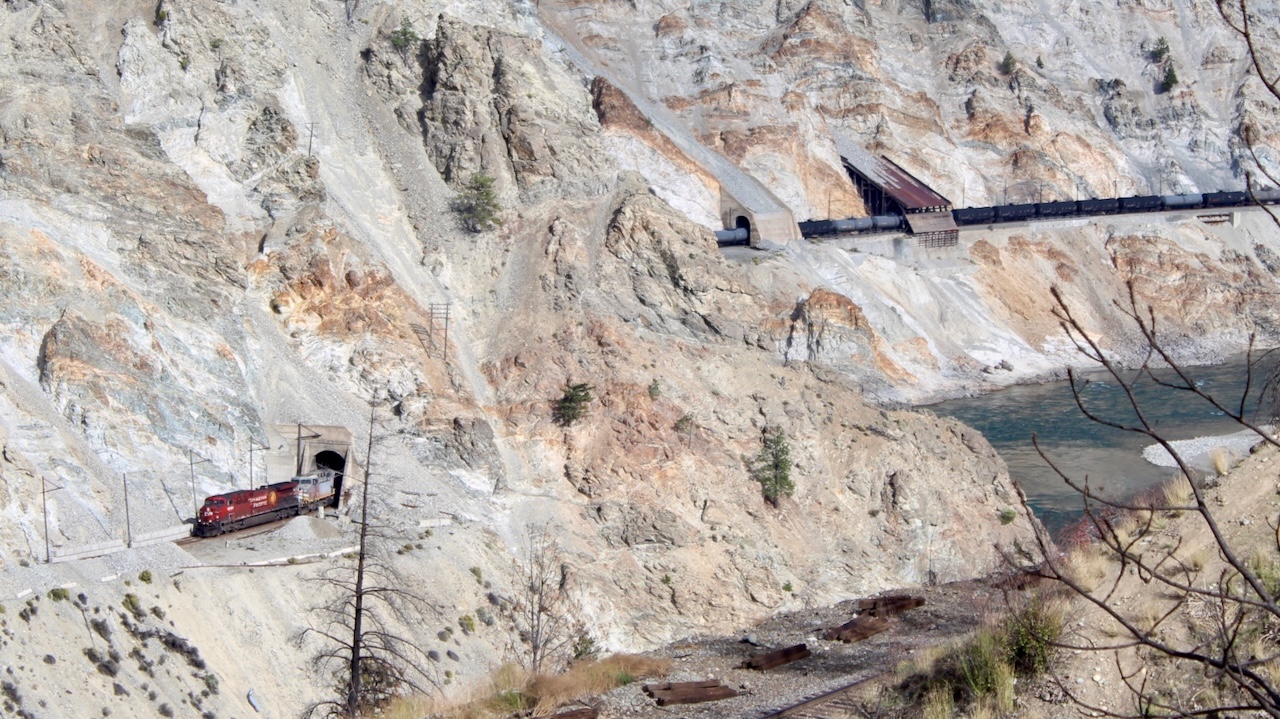
WASHINGTON — Any savings Amtrak management may achieve by reducing most long-distance trains to triweekly service will be overshadowed by a precipitous drop in revenue, additional unforeseen expenses, and a crippled ability to restart service.
That assessment is the consensus of former Amtrak managers contacted by Trains News Wire: former president and CEOs Thomas Downs and David Gunn; former vice president of transportation Bob Vander Clute; and two product line managers responsible for growing revenue and managing costs in the mid-1990s, when many long-distance train frequencies were reduced in a bid to cut expenses while promising to keep routes intact.
Amtrak has announced plans to cut long-distance frequencies as of Oct. 1 as a result of COVID-19-related revenue losses expected to last through most of 2021. This is the first in a series of articles on the impact Amtrak frequency reductions had in the 1990s, and the historical perspective that might provide the current proposal.
Forced cuts
Amtrak Executive Vice President and Chief Revenue Officer Roger Harris says that in fiscal 2019, long-distance trains “cost $1.03 billion to operate, resulting in a net operating loss of $475 million.” In a July letter to Steve Roberts, president of the Rail Passenger Association of California and Nevada, that cites those figures, Harris says Amtrak will make the cuts because “We simply do not see an alternative.”
Tom Downs faced a similar challenge. But after taking over from Amtrak president W. Graham Claytor Jr., in late 1993, Downs learned this was exactly the wrong approach to produce savings demanded by the Clinton Administration and Republican lawmakers.
“When you’re facing off with a very popular Democratic President and a recalcitrant Republican Congress, there’s no safe harbor,” Downs says. If the company hadn’t made a demonstrable — but in retrospect, ill-advised — effort to cut expenses by deciding to run some trains less than daily, he says, “I thought they [the administration and Congress] would have inflicted grievous bodily harm in a forced march to oblivion.”
Beginning in 1995, frequencies on all or a portion of the Crescent, Empire Builder, California Zephyr, City of New Orleans, Texas Eagle, Desert Wind, and Pioneer routes were reduced. An outside consultant severely misjudged how anticipated savings never came close to offsetting revenue losses.
“It was never going to work,” Downs says. “People in this business don’t understand the network effect of the railroad; [travelers] need to know when planning any trip that they can leave on the day they want to go and make connections at any hub within a reasonable amount of time, or they won’t take the train.”
‘Sacrificial hostages’
When the consultant’s revenue estimates fell short, Downs says, “There was a model my finance director Betsy Reveal and her deputy Tim Slottow developed that was able to project the revenue impacts of various adjustments on schedules and timing. It showed that taking the long-haul trains to less than seven days a week was a financial end of the road for Amtrak.” Slottow would later become president of the University of Phoenix.
Downs was in a difficult position.
“I couldn’t figure out a way to convince both the Congress and the White House that we were serious about cost reductions, and here’s the pain that goes with them. So the triweekly Desert Wind and Pioneer became sacrificial hostages that allowed the other trains to return to daily operation,” he recalls.

[Bob Johnston]
The Texas Eagle, which had been relegated to triweekly status south of St. Louis in 1993, was slated for discontinuance along with the Salt Lake City-Las Vegas-Los Angeles Wind and the Denver-Portland, Ore.,-Seattle Pioneer on May 10, 1997. The Eagle was a financially poor performer because — like all less-than-daily trains — it generated seven days of expenses, but only offset them with three days of revenue. Timetables not including the Eagle had already been printed, but the train continued as a result of grass-roots initiatives from the Arkansas and Texas communities that continued to offer local marketing support during the lean triweekly years.
“I think they were effective and motivated because they had Kay Bailey Hutchison [a Republican U.S. Senator from Texas] as an inspiration and behind-the-scenes leader; she was outraged by [then-Gov. George W. Bush’s] cavalier attitude toward rail service, so she reached out to offer help to the mayors affected,” Downs says. He remembers that the future U.S. President didn’t know Amtrak even operated in the state when he was informed the Dallas-Houston section of the train was being cut.
Hutchison’s “national or nothing” stance against Amtrak’s predisposition to favor the Northeast Corridor over far-flung, long-distance routes was ignited by visits with Texas mayors like Celia Boswell of Mineola, Audrey Kariel of Marshall, and Natalie Rabicoff of Longview, who valued the Eagle’s contribution to their communities.
“She still is the unsung hero of train service in Texas, and had our back in helping to preserve the network” says Downs. He credits a promise then of more mail and express revenues as the key ingredient leading to the Eagle’s preservation and eventual return to daily operation.
“I was always interested in pushing mail and express along because it had a direct-to-the-bottom line positive impact at very little incremental cost,” Downs says. “The head of the Intercity unit at the time, Mark Cain, believed he could grow revenue, so I wanted to give him a shot, but [trying to extend it to package delivery] wound up becoming a weight on the business, so it needed to be recognized as a failure.”
Although mail and express did not become the ultimate panacea, Downs’ emphasis on bottom-line performance and revenue growth was the catalyst allowing product line managers to quantify negative impacts of triweekly service, and make the case for daily operation.
Next, on Aug. 6: The case for daily operation.













